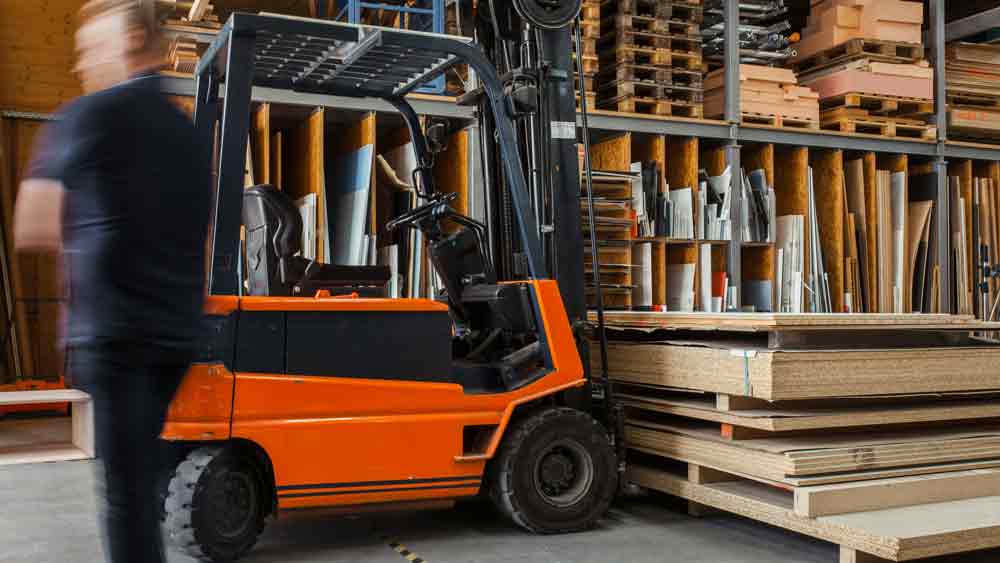Warehouses are the backbone of supply chains, ensuring that goods move efficiently from suppliers to consumers. However, the physical demands of warehouse work—heavy lifting, repetitive motions, and prolonged standing—can take a toll on employees, leading to fatigue, injuries, and long-term strain. Poor ergonomics puts workers at risk, affects overall productivity, contributes to absenteeism, and increases turnover rates.
|
ADVERTISEMENT |
The costs of workplace injuries are substantial, from medical expenses and workers’ compensation claims to lost work hours and reduced efficiency. Yet, many of these injuries are preventable with the correct ergonomic strategies. A well-designed warehouse environment that prioritizes worker comfort and safety leads to healthier employees, lower injury rates, and a more engaged workforce.
By making thoughtful changes to the work environment, warehouses can create a safer and more efficient workspace that benefits workers and businesses. Here are 10 key steps warehouse managers can take to improve ergonomics and reduce strain on employees.
1. Flooring
Workers who spend long hours standing on hard surfaces are more prone to fatigue and musculoskeletal issues. Installing anti-fatigue mats in areas where employees stand for extended periods can help reduce strain on the lower back and legs. These mats provide cushioning to absorb impact and promote better posture.
2. Personal protective equipment
Providing ergonomic PPE can significantly reduce strain on workers’ bodies. Gloves with wrist support, knee pads for those who frequently kneel, and anti-vibration gloves for workers using power tools can minimize the risk of strain and repetitive stress injuries.
3. Adjustable workstations
Workstations accommodating different employee heights and preferences enhance comfort and efficiency. Height-adjustable workstations for tasks such as shipping, receiving, packing, and sorting allow workers to alternate between sitting and standing, reducing the risk of strain from prolonged postures.
4. Proper material-handling equipment
Heavy lifting is one of the leading causes of workplace injuries in warehouses. Equipping workers with ergonomic tools such as lift-assist devices, powered pallet jacks, and exoskeleton support suits can help them handle heavy loads with less strain on their muscles and joints.
5. Job rotation
Repetitive motions can lead to musculoskeletal disorders (MSDs) over time. Implementing a job rotation system helps distribute physical stress more evenly across different muscle groups, reducing the likelihood of repetitive motion injuries and fatigue.
6. Training and awareness
Regular training on ergonomics and body mechanics is essential. Employees should be educated on recognizing early signs of strain, proper posture, and the importance of stretching during breaks. Encouraging workers to take short breaks and engage in light stretching can help prevent long-term injuries.
7. Environmental controls
The warehouse environment is crucial to worker comfort and productivity. Good lighting reduces eye strain, while proper ventilation improves air quality and reduces fatigue. Maintaining moderate temperatures—avoiding extreme heat or cold—can also help improve focus and reduce physical discomfort.
8. Lifting techniques
Teaching workers proper lifting techniques can significantly reduce the risk of back injuries. Training should emphasize bending the knees, keeping the back straight, lifting with the legs, and avoiding twisting motions. Encourage using team lifts for particularly heavy items to enhance safety.
9. Task automation
Incorporating automation can help reduce the physical demands of warehouse work. Automated systems such as conveyors, robotic arms, and automated guided vehicles (AGVs) can handle repetitive or strenuous tasks, allowing employees to focus on less physically taxing work while improving efficiency.
10. Optimal layout design
A well-organized warehouse layout minimizes unnecessary movement, bending, twisting, and reaching. Positioning frequently used items at waist height and designing efficient pick paths can reduce worker fatigue and enhance productivity. Reducing the need for excessive lifting and awkward postures leads to a safer and more ergonomic workspace.
Prioritizing ergonomics for a healthier workforce
By implementing these ergonomic best practices, warehouses can improve worker safety, reduce injury-related downtime, and increase efficiency. Investing in ergonomic solutions benefits employees and enhances operational effectiveness, leading to a healthier, more productive workforce. By making small but meaningful changes, warehouses can foster a culture of safety, ultimately reducing costs and improving employee satisfaction.
A recent Newcastle Systems Worker Happiness Survey Report shows that providing employees with the right tools and equipment significantly affects job satisfaction and efficiency. This highlights the importance of investing in ergonomic solutions for safety and creating a more enjoyable and fulfilling workplace. By equipping employees with the right resources, warehouses can boost retention, reduce turnover, and enhance overall morale.

Add new comment